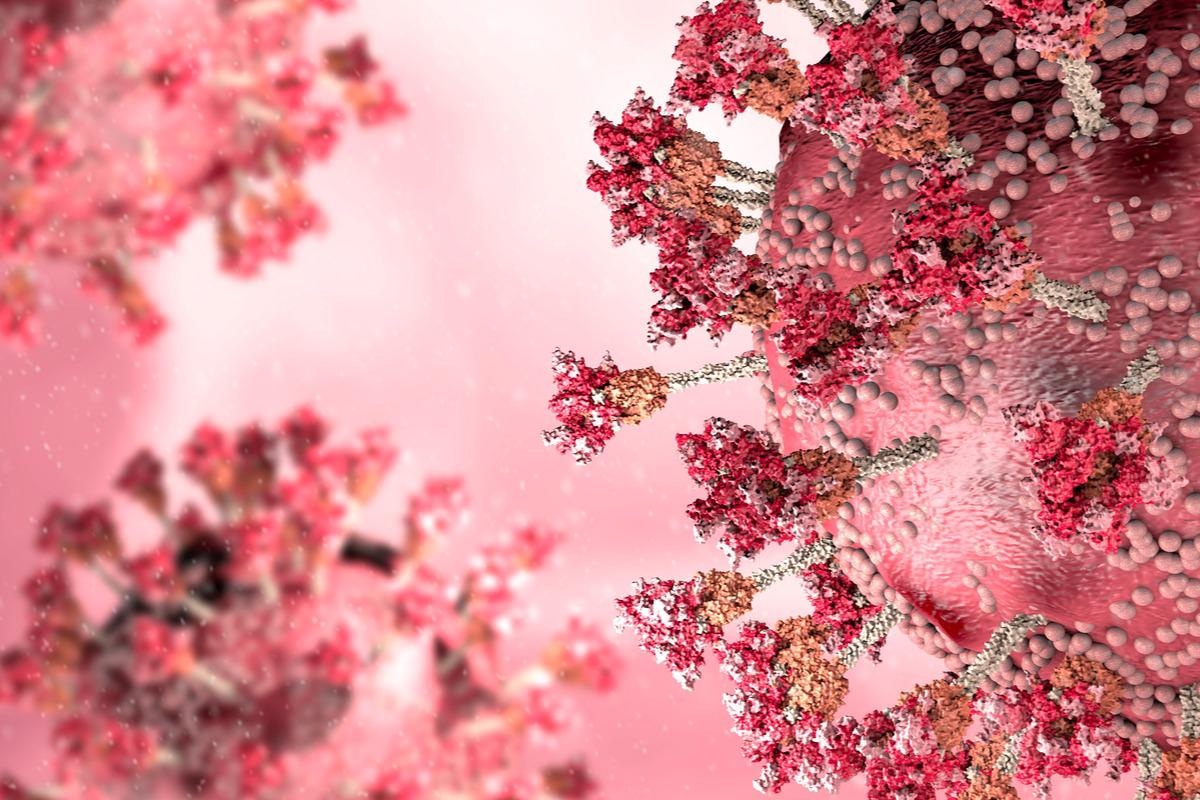They evaluated two S gene mutations, namely, P681H and N679K for their contribution to the furin cleavage site (FCS) activity in Omicron S in comparison to the other SARS-CoV-2 variants and other coronaviruses (CoVs).
 Study: Intrinsic furin-mediated cleavability of the spike S1/S2 site from SARS-CoV-2 variant B.1.529 (Omicron). Image Credit: Naeblys/Shutterstock
Study: Intrinsic furin-mediated cleavability of the spike S1/S2 site from SARS-CoV-2 variant B.1.529 (Omicron). Image Credit: Naeblys/Shutterstock

 *Important notice: bioRxiv publishes preliminary scientific reports that are not peer-reviewed and, therefore, should not be regarded as conclusive, guide clinical practice/health-related behavior, or treated as established information.
*Important notice: bioRxiv publishes preliminary scientific reports that are not peer-reviewed and, therefore, should not be regarded as conclusive, guide clinical practice/health-related behavior, or treated as established information.
Studies have reported that SARS-CoV-2 can be primed for invading the host by the host cell protease furin. Therefore, FCS has been established as a key factor for the pathogenicity of the SARS-CoV-2 variants. The FCS is situated between the S receptor-binding domain (S1) and the fusion domain (S2).
FCS is present among all the circulating SARS-CoV-2 variants. However, the evolution of FCS by replacement of the proline (P681) residue with arginine (R) and histidine (H) in variants such as Delta and Alpha, respectively confers increased transmissibility to the variants.
The Omicron variant has been reported to have less fusogenic potential with reduced S cleavage compared to other variants. However, the furin pattern in Omicron S ectodomain has increased efficiency than that of the prototypic S ectodomain. Detailed information on the process of Omicron S cleavage is lacking.
About the study
In the present study, researchers assessed the furin-mediated cleavage of Omicron S in vitro to determine the role of two S gene mutations, P681H, and N679K in the FCS of Omicron. They also compared the furin cleavability of Omicron S to that of SARS-CoV-2 variants such as Wuhan-Hu-1, Alpha, and Delta and that of other CoVs. The CoVs assessed were Middle East Respiratory Syndrome CoV (MERS-CoV), human CoV (HCoV)-OC43, and HCoV-HKU1.
CoV S sequences were assessed using the probability score-based PiTou V3 and the machine learning algorithm-based ProP 1.0 bioinformatic prediction tools. Fluorogenic peptide cleavage assays were carried out to determine the furin cleavage activity of SARS-CoV-2 S1/S2.
Furin-catalyzed reactions were performed by diluting 1 U/well recombinant furin in a buffer consisting of 0.2 mM β-mercaptoethanol, 20 mM HEPES and 0.2 mM calcium chloride (CaCl2) at a pH of 7.5. Trypsin-catalyzed reactions were carried out as a positive control, wherein 0.8 nM/well L-1-tosylamido-2-phenylethyl chloromethyl ketone (TPCK) trypsin was diluted using a phosphate buffer saline (PBS). Peptide without protease was suspended in the PBS buffer for use as a negative control. The emitted fluorescence was assessed every minute for an hour by a SpectraMax fluorometer at 30°C with emission and excitation wavelengths of 390 nm and 330 nm, respectively.
Results
In this study, the ProP tool predicted substantially greater cleavability of Omicron S by furin compared to the Wuhan-Hu-1, Alpha, and Delta strains. This higher furin-mediated cleavage was due to the presence of the N679K mutation in Omicron S, situated outside the furin binding pocket. The ProP and PiTou tools predicted relatively lower furin activity for MERS-CoV compared to that of HCoV-OC43 and HCoV-HKU1.
For further exploration of the furin cleavability, the peptides were examined using a P7 lysine residue (K) for FCS sequences of B.1 and Delta, containing P681 and P681R and mutations, respectively. The P7 residue demonstrated a noteworthy effect on S cleavability with remarkably greater cleavage activity of B.1 with P7 K compared to Omicron. However, the manner in which this enhanced peptide cleavage translates to cleavage of the entire S protein is yet to be determined.
Conclusion
Overall, the study findings demonstrated that Omicron S has an increased ability to be cleaved by the host cell furin at the S1/S2 position, in contrast to that of previous studies. Further, the N679K mutation significantly impacts the function of SARS-CoV-2 S, especially when combined with changes at other positions such as 681 (H/R).
The authors believe that Omicron has increased furin-mediated S1/S2 cleavability, which is balanced by the epistatic effects of other mutations such as H655Y, S375F, and D614G that drive SARS-CoV-2 infections and viral tropism.

 *Important notice: bioRxiv publishes preliminary scientific reports that are not peer-reviewed and, therefore, should not be regarded as conclusive, guide clinical practice/health-related behavior, or treated as established information.
*Important notice: bioRxiv publishes preliminary scientific reports that are not peer-reviewed and, therefore, should not be regarded as conclusive, guide clinical practice/health-related behavior, or treated as established information.